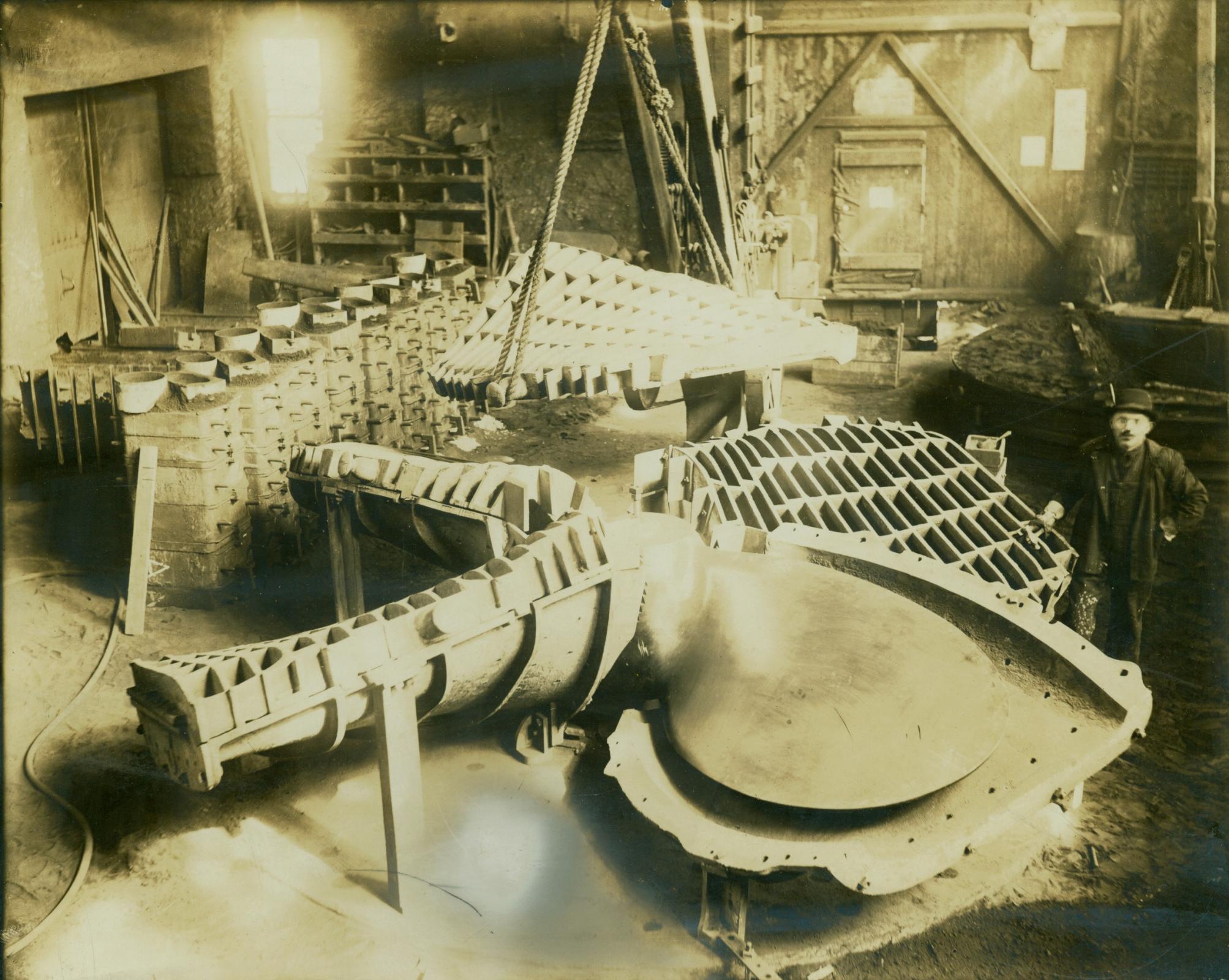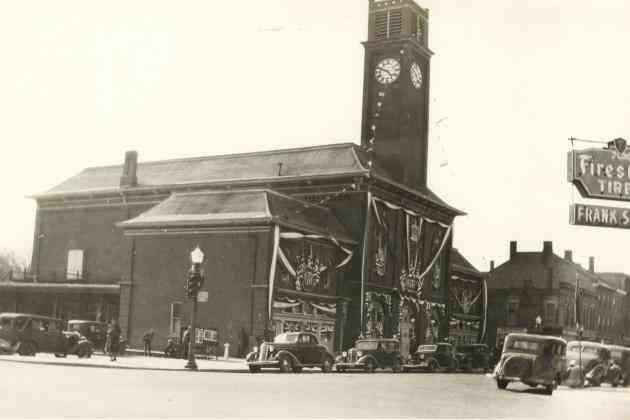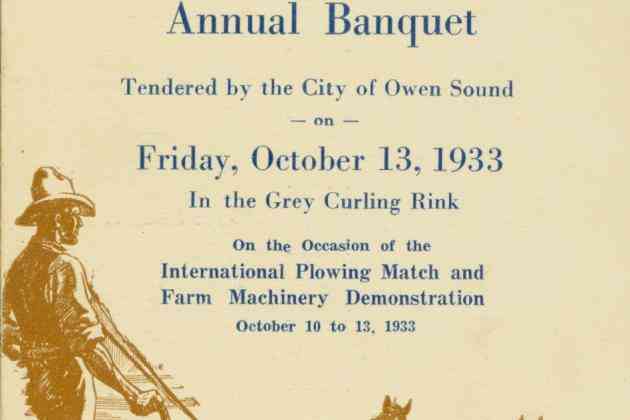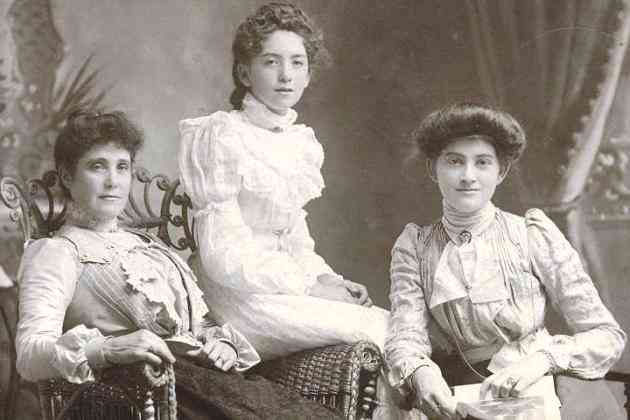The Kennedy Empire
A very important collection, which chronicles the growth of a manufacturer in Canada over a 140-year period, is preserved, catalogued and available to the public for research and viewing at the Grey County Archives. The collection features over 10,000 black and white photographs documenting the development, growth and production of a company that played a vital role in the growth of almost every sector of Canadian industry. Also, in the collection are negatives, blueprints, advertising materials, newspaper clippings and ledgers diligently collected since 1857.
William Kennedy was born in Dumfries, Scotland, became a millwright after serving an apprenticeship in Glasgow, and immigrated to Canada in 1831. He arrived to find a primitive economy, geographical problems of immeasurable complexity and a climate of such severity where only the heartiest or almost desperate of adventurers could be attracted to settle. He also saw men and women scattered in small agricultural settlements who faced the challenge with outstanding fortitude, courage and dedication.
William Kennedy had seen the effects of the industrial revolution in Glasgow and could see his hand being put to it in Canada. The timber industry was booming – saw mills sprang up all over Upper Canada. Shipbuilding also grew at a spectacular rate. William Kennedy went to Sydenham (currently known as Owen Sound) in 1856 to install machinery in the Harrison Woollen and Grist Mill at the Mill Dam on the Sydenham River. At that time the town had a population of 2,000 and William decided to remain there after the installation was completed. In 1857 he opened a modest-sized planing and matching mill, which operated out of a small wooden shack, and in 1860, Thomas and Matthew, two of his sons, joined him. Benefiting from the timber industry and the market for trade, William Kennedy and Sons expanded three years later, building a new two-storey building to house a sash and door factory and a machine shop. Owen Sound grew into one of the busiest ports in the country, and Kennedy’s factory built equipment for the fishing, passenger, freight and pleasure crafts that frequented the harbour. They also did marine repairs during the winter months.
The collection at the Archives is a record of the growth of this company, which parallels the growth of manufacturing in Canada. Kennedy’s machine shop and foundry advertised “Castings of every design.” Indeed, they built farm implements and equipment for every type of saw, grist, flour and cement mill. In the foundry they also built water-wheel hydraulic turbines, which drove machinery before electricity. Kennedy always took a leading part in the development of new industries including the pulp and paper business, mining, the railway and later the development of hydroelectric projects. Each project, installation or production was documented using the photographic technologies of the day.
William Kennedy and Sons, Ltd., may be best known for its contribution to shipbuilding. The company was the leading manufacturer of propellers for all types of marine craft. At one time, it supplied propellers for about ninety-five percent of marine traffic on the Great Lakes. During both World Wars, production was geared almost exclusively to the war effort. Kennedy and Sons built propellers, wind-less drive shafts and other integral equipment for every boat committed to war. A Kennedy propeller drove the lead boat in the D-Day invasion. The company’s contributions during the war have been recognized by the crown and duly noted, and the National Film Board documented their wartime production.
William Kennedy and Sons remained a family-owned business until 1951, when it was sold to a British interest, Had-Mils, but it retained its name and family management. Later it was sold to an American company and became known as Black Clawson-Kennedy. It grew to immense proportions, occupying large tracts of land within Owen Sound with sales bureaus all over Canada. The larger the company became the more sensitive it was to market fluctuations. Production and staffing levels went up and down erratically until 1996 when it closed its doors forever. Today the empire the Kennedys built is no longer – its buildings demolished.
What is documented in this collection is more than just pictures of machinery and propellers. People are posed with products in many of the works. Their presence gives an idea of scale, but the pictures are caring portraits of workers who built the company by careful dedication to their craft. During the war every propeller was photographed before it left the plant. Each photo was an event. Everyone involved in the making of each propeller took time out from their work to pose with the fruit of their labour. On the occasion of the completion of the One Hundredth Propeller, there was a celebration for the entire staff. This event was marked by a dance held for family and friends. Looking at the collection is like looking at a giant family album. Not only are the days at work seen, but also the days at play. There was a full schedule of company sporting events, picnics and parties on the social calendar. All these are documented along with the award ceremonies, and each apprentice is shown getting his shingle. Local charities were supported and welcomed as members of the Kennedy family, and the benefits of their contributions were recorded for posterity. The collection is a time capsule of almost a century and a half.












